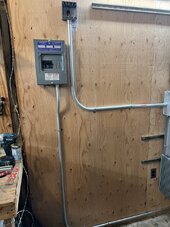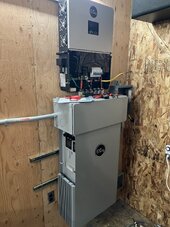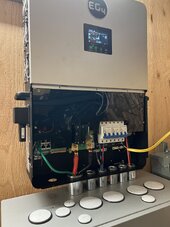Fezzik
New Member
Hi kids!
I had a tiny 12V system a few years ago, just for absolute emergencies (2 chest freezers, basically) But through that learned a lot.
Moving up, and have been putting in a LOT of time on this system. EG4 6000XP, EG4 PowerPro battery. A dozen Hyundai Panels, soon to add some Q-Cell, or Solarever Bifacials soon (we get a lot of snow, Bi-facial seems like a no-brainer). Installing this all in my garage.
Doing everything myself. It has been a ton of work, but trying not to cut corners.
I have many questions for you guys, but glad I found this forum. I hope it will bring some answers, and hopefully I can provide some as well.
FYI, I am a Journeyman Electrician, still working in the trade, but none of my work involves Photovoltaic systems. I'm just as new to this as everyone else, except maybe I can do load calculations in my head quickly!
Look forward to learning!
This is my project as of Christmas weekend! Not pictured is my underground from the grid, and feed to a basement sub-panel.
I had a tiny 12V system a few years ago, just for absolute emergencies (2 chest freezers, basically) But through that learned a lot.
Moving up, and have been putting in a LOT of time on this system. EG4 6000XP, EG4 PowerPro battery. A dozen Hyundai Panels, soon to add some Q-Cell, or Solarever Bifacials soon (we get a lot of snow, Bi-facial seems like a no-brainer). Installing this all in my garage.
Doing everything myself. It has been a ton of work, but trying not to cut corners.
I have many questions for you guys, but glad I found this forum. I hope it will bring some answers, and hopefully I can provide some as well.
FYI, I am a Journeyman Electrician, still working in the trade, but none of my work involves Photovoltaic systems. I'm just as new to this as everyone else, except maybe I can do load calculations in my head quickly!
Look forward to learning!
This is my project as of Christmas weekend! Not pictured is my underground from the grid, and feed to a basement sub-panel.






